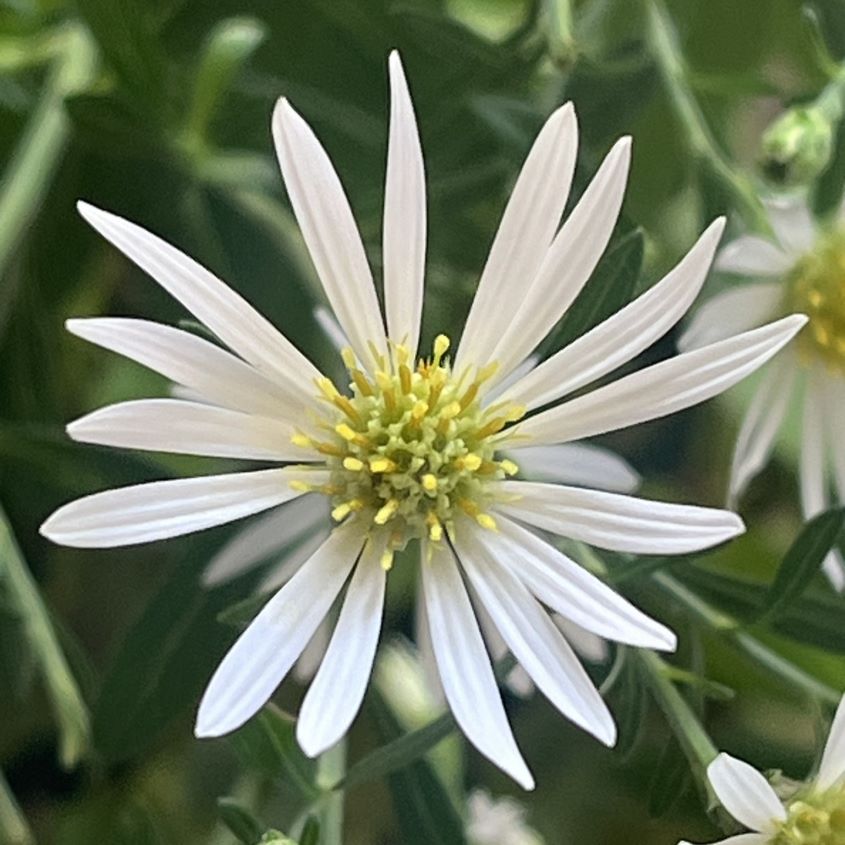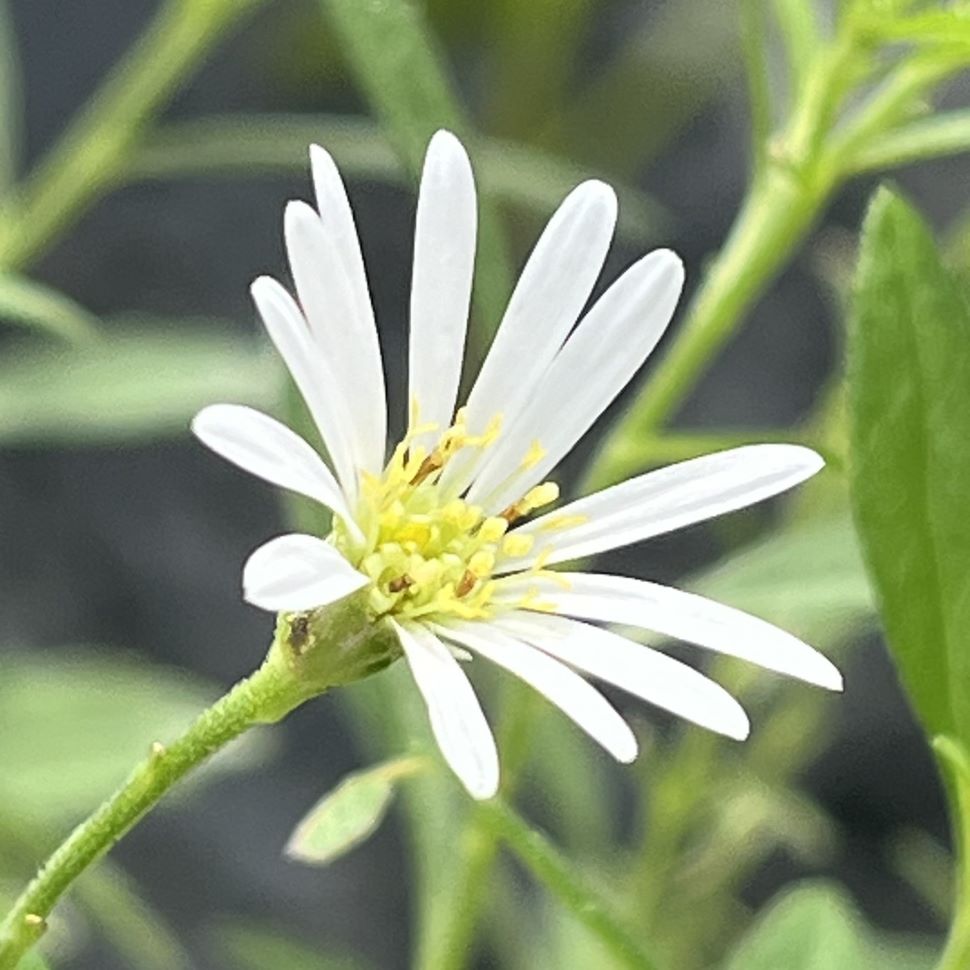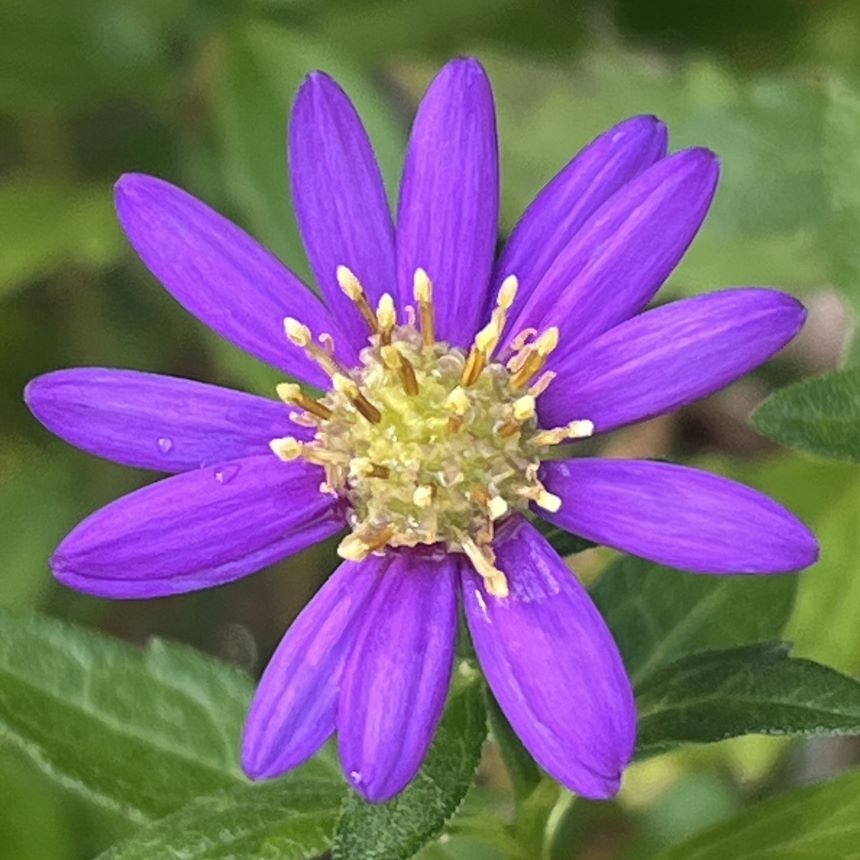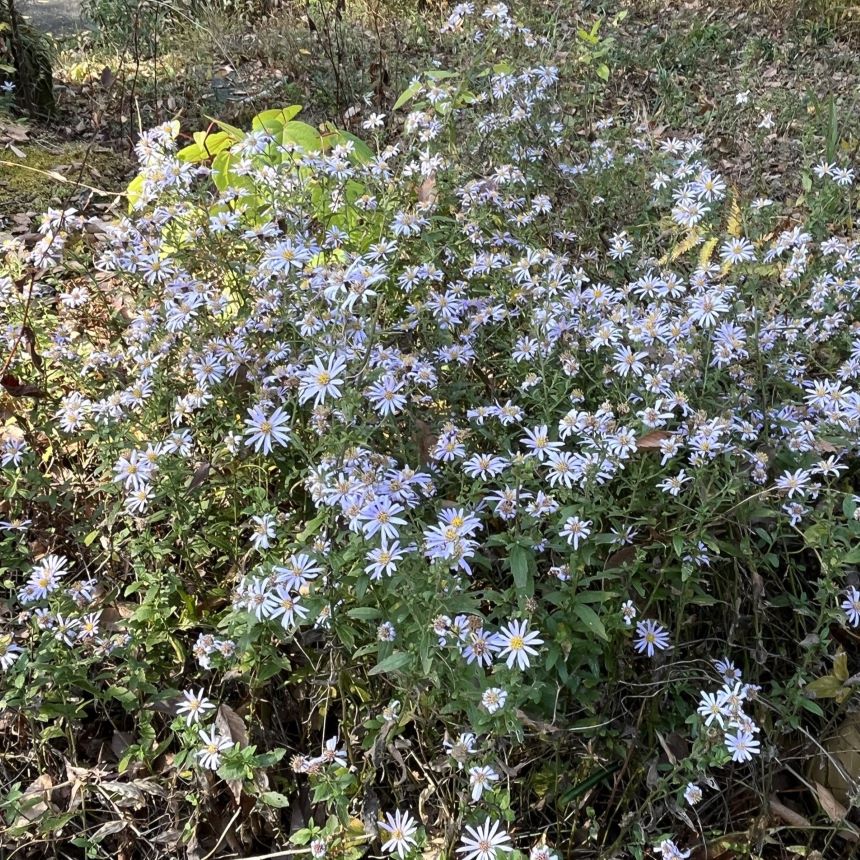ノコンギクは野菊の一種。小説『野菊の墓』では、少年が採った一握りの花を、少女が顔に押しあてて喜びます。しかし、別々に時が過ぎ…。
Wild Chrysanthemum is a type of wild chrysanthemum. In the novel “The Tomb of Wild Chrysanthemum,” a young girl rejoices as she presses a handful of flowers picked by a young boy against her face. However, the two of them spend their lives apart…
【仮名】ノコンギク
【和名】野紺菊
【英名】Wild Chrysanthemum
【学名】Aster microcephalus var. ovatus
【誕生】10/ 28, 11/ 09
【開花】08, 09, 10, 11月
【花色】White, Violet
ノコンギク
ノコンギクの概要

ノコンギクはキク科シオン属の多年草です。本州から四国、九州まで分布し、陽当たりのよいところで群生。伊藤左千夫の小説『野菊の墓』では、少年が採った一握りの花を、少女が顔に押しあてて喜びます。しかし、別々に時が過ぎ…。青年は彼女の墓の周りにその花を植えました。
ノコンギクの名前

ノコンギクの和名は「野に咲く紺色の菊」という意味です。ただし、紺色も薄い色から濃い色まで様々。特に園芸種は花色が濃く、「紺菊」と呼ばれます。ラテン語の属名アスターは「星」、種小名ミクロセファルスは「郭公薊に似た」、変種名オバトゥスは「卵円形の」という意味。
ノコンギクの姿形

ノコンギクは地下茎で広がり、茎を立ち上げ、盛んに分枝します。根生葉は柄があり、茎生葉は互生。楕円形で鋸歯が入り、両面に短毛が密生します。花は茎先で上を向いて咲き、花冠の真ん中が筒状花、周りが舌状花。花後は痩果を結び、熟すと冠毛のついた種子を風で飛ばします。
ノコンギクの近縁

ノコンギクの近縁種「嫁菜」もシオン属の多年草で葉や花の形がよく似ています。いずれも昔から「野菊」と呼ばれ、新芽を摘んでお浸し、和えもの、天ぷらなどに食用。野紺菊と同じようなところで自生しているものの、葉に毛が生えず、花柄が短く、種子に冠毛がついていません。
Wild Chrysanthemum

Wild Chrysanthemum is a perennial plant of the Aster genus in the Asteraceae family. It is found in areas from Honshu to Shikoku and Kyushu, and grows in clusters in sunny places. In Sachio Ito’s novel “The Tomb of Wild Chrysanthemum,” a young girl rejoices as she presses a handful of flowers picked by a young boy against her face. However, the two of them spend their lives apart… The young man plants the flowers around her grave.
The Japanese name for Wild Chrysanthemum means “navy blue chrysanthemum blooming in the field.” However, the navy blue color varies from light to dark. The horticultural variety has a particularly dark flower color and is called “navy blue chrysanthemum.” The Latin genus name Aster means “star”, the specific name microcephalus means “similar to Ageratum”, and the variety name ovatus means “oval”.
Wild Chrysanthemum spreads via underground stems, which then grow upright and branch vigorously. The basal leaves are stalked, and the stem leaves are alternate. They are oval, serrated, and densely hairy on both sides. The flowers bloom facing upwards at the end of the stem, with tubular flowers in the center of the corolla and ray flowers around them. After flowering, they form achenes, and when they ripen, the seeds with pappus are blown away by the wind.
Aster yomena, a close relative of Wild Chrysanthemum, is also a perennial plant with similar leaf and flower shapes. Both species have been called “wild chrysanthemum” since ancient times, and the new shoots are picked and eaten in soy sauce, salads, and tempura. Although it grows in the same places as Wild Chrysanthemum, its leaves are hairless, its flower stalks are short, and its seeds are not pappus-like.


